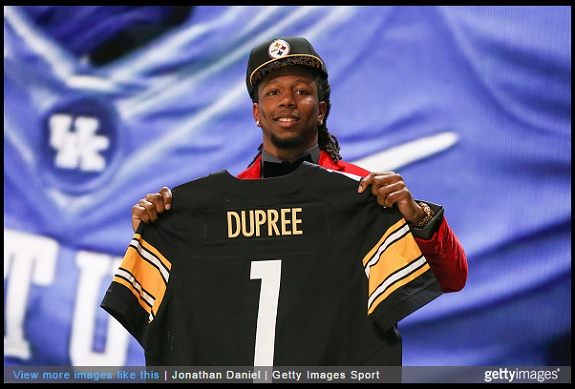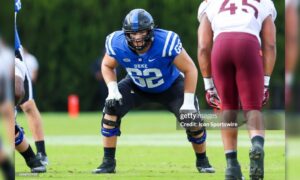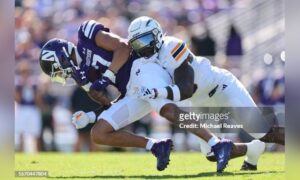On the heels of the conclusion of the 2015 NFL Draft, I began to realize the need to enhance my understanding of each team’s draft history; what they’ve built or attempted to build over the past ten years and how they’ve went about that process.
This may seem tedious to you, the reader, but I think as analysts of a great game, it can be hard to criticize or praise a team without understanding the full context of how their roster and positional depth has been constructed. For example, the New York Jets and the Buffalo Bills are often ridiculed heavily for their drafting incompetence at the quarterback position, but while often grouped together, a review of their past 16 classes suggest two vastly different front office mindsets. The Jets have spent an incredible 12 picks on quarterbacks (by far the most in the AFC), while the Bills have used just four selections on signal callers over the same time period. So two teams that have had similar results at the quarterback position since 2000, but have attempted to address those issues in vastly different ways.
Similar comparisons can be made in the AFC North, a process which we began to endeavor upon with an examination of each team’s offensive and defensive draft classes over the past ten years. Today we will look at all four team’s selections from 2006-2015 at the linebacker position, before moving into defensive backstomorrow.
Linebackers
Pittsburgh Steelers: 14
Cleveland Browns: 14
Baltimore Ravens: 12
Cincinnati Bengals: 8
It should be no surprise that Pittsburgh sits atop this list, as their reputation for prioritizing edge rushers to fit their 3-4 defense in the draft has not gone unnoticed. In fact, Pittsburgh has spent their last three first round selections on the linebacker position, reeling in Jarvis Jones in 2013, Ryan Shazier in 2014, and Bud Dupree this year. No AFC North team has used more first round picks on linebackers since 2006 than Pittsburgh’s four, with Cleveland coming the closest at two. The Steelers scarcely lay off the position in the second and third rounds either, as they’ve spent another four picks addressing the position on the draft’s second day during that time.
It is no secret that the team has had its struggles at the position over the past few years. As promising players like Jones, Jason Worilds, and Sean Spence have struggled to make the expected impact due to injuries and/or a lack of premier talent, others such as Bruce Davis, Thaddeus Gibson, and Chris Carter failed to contribute much at all during their brief stints in Pittsburgh. Much of the Steelers defensive progress this season will hinge on the play of Shazier and Dupree, as Pittsburgh will look to their two young linebackers to end their recent plight of drafting underperforming players at the linebacker position.
The Browns have nabbed high-end prospects at linebacker as well, with two first round picks and four second rounders spent addressing the position. Both the Browns first round picks over the past ten years, Kamerion Wimbley and Barkevious Mingo, haven’t panned out like the team hoped (jury is still out on Mingo), and only D’Qwell Jackson has really shone amongst their second round selections. The Browns failures to find quality players at the linebacker position via the draft have only exacerbated their struggles along the defensive line, and are a huge reason why the team was ranked dead last in the NFL in run defense in 2014. The team is undoubtedly hoping that Mingo and 2014 third-round inside linebacker Christian Kirksey step up alongside veterans Karlos Dansby and Paul Kruger to form the best linebacking corps the team has had in quite some time.
The Ravens haven’t used quite as many selections addressing the linebacker position, in part because of the longevity they have received from players like Ray Lewis and Terrell Suggs. The lack of turnover at the position has allowed them to use seven round three or later picks addressing the linebacker spot, along with five 1st or second round selections. Those early round picks have had limited success to say the least, with the exception of C.J. Mosley’s brilliance as a rookie last season as the team’s first, first round linebacker draftee since Suggs in 2003.
Like Pittsburgh, despite their stellar reputation for developing talented linebackers, the Ravens have really struggled in the draft at the position over the past ten years. Players like Sergio Kindle (2nd), Kruger (2nd), Arthur Brown (2nd), Courtney Upshaw (2nd), and Tavares Gooden (3rd) have been either total busts or developed much slower than hoped for, while only Pernell McPhee has really panned out from Baltimore’s later round selections. The difference between the Ravens and the Steelers is that Baltimore has continued to receive quality play from their veterans in Suggs and Elvis Dumervil, while Pittsburgh has had to turn to their draftees sooner rather than later.
The Bengals have prioritized linebacker much less than the other three AFC North teams, again going back to their roots as a 4-3 team rather than the 3-4 that Pittsburgh, Baltimore, and Cleveland utilize more frequently. In fact, Cincinnati has spent just three 1st-3rd draft picks at linebacker in the past ten years, with one coming in each round. This year’s selection of Paul Dawson was the first time the team has spent a day one or two pick on a linebacker since 2009, when they reeled in Rey Maualuga in the second round. Keith Rivers was the team’s only first round linebacker in the past ten years, and his resulting NFL struggles have undoubtedly made the team wary of drafting so early at the position.








